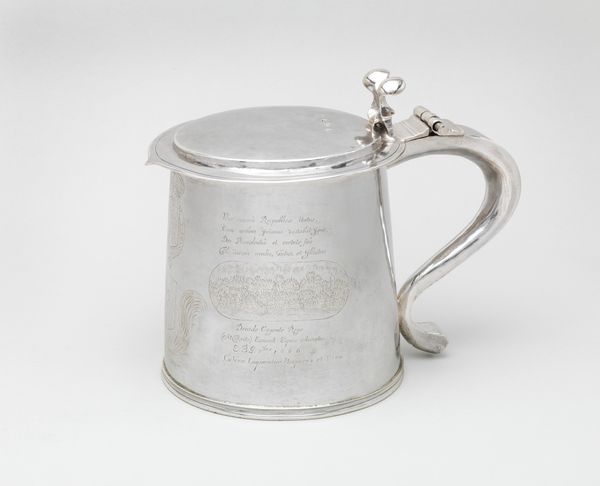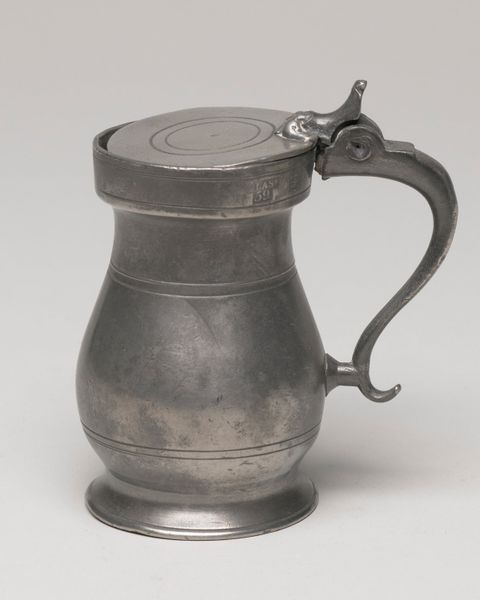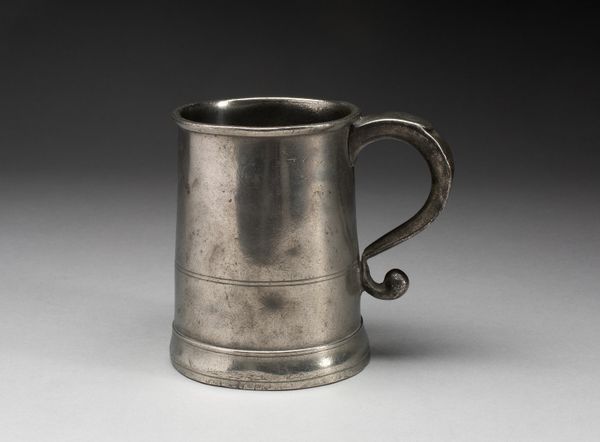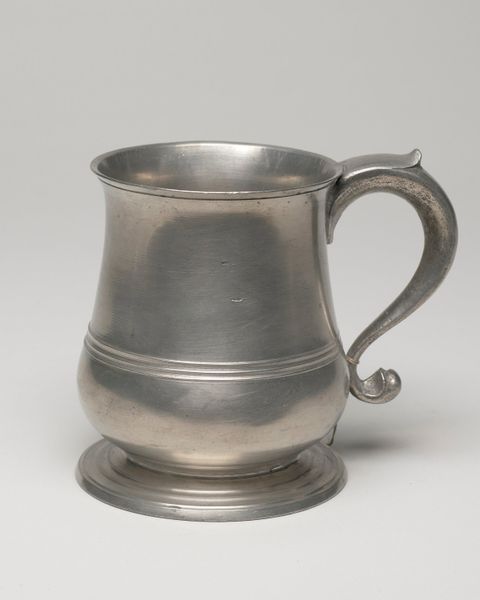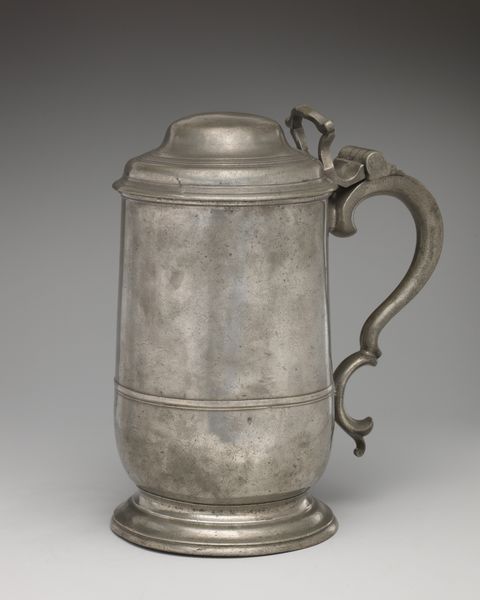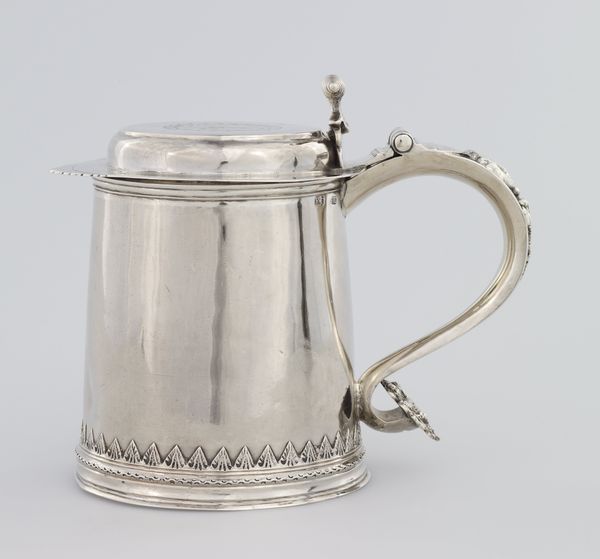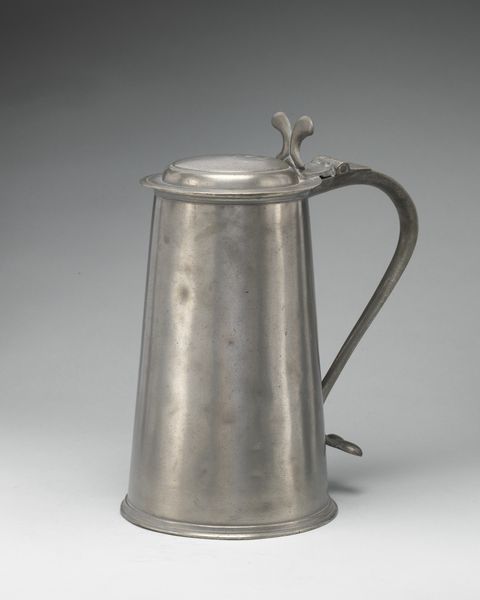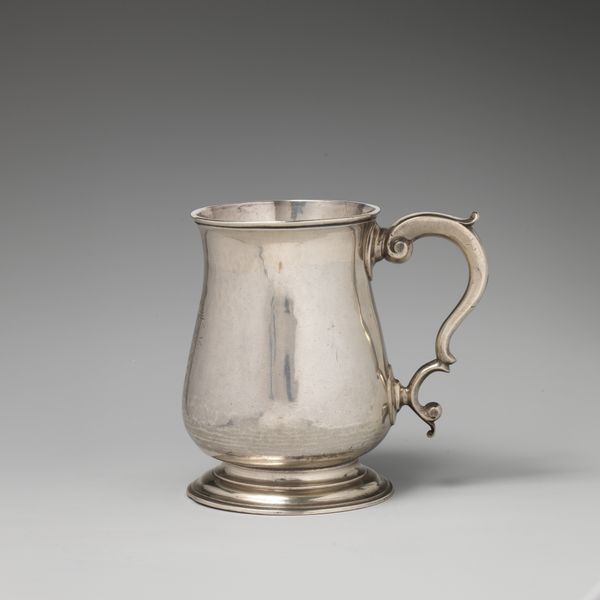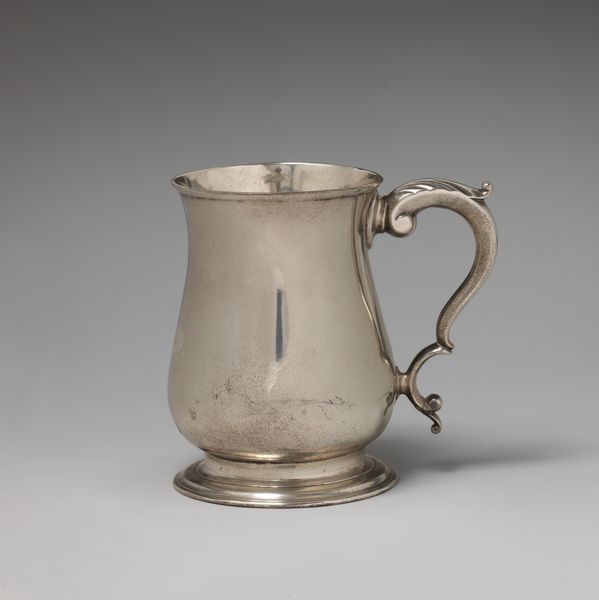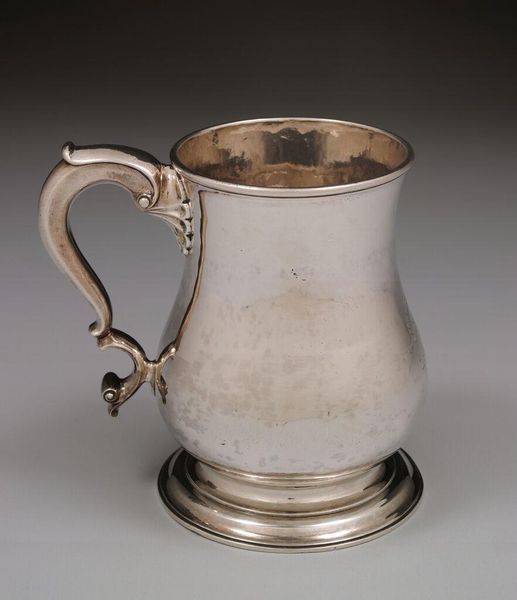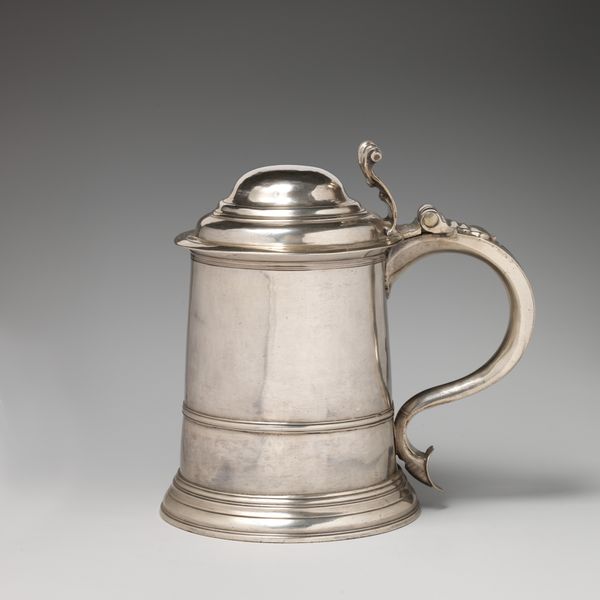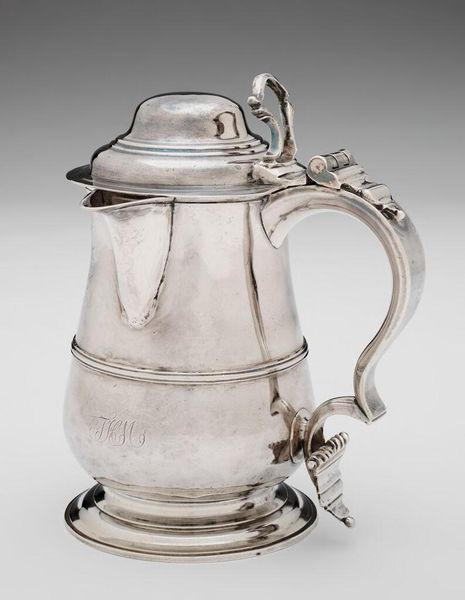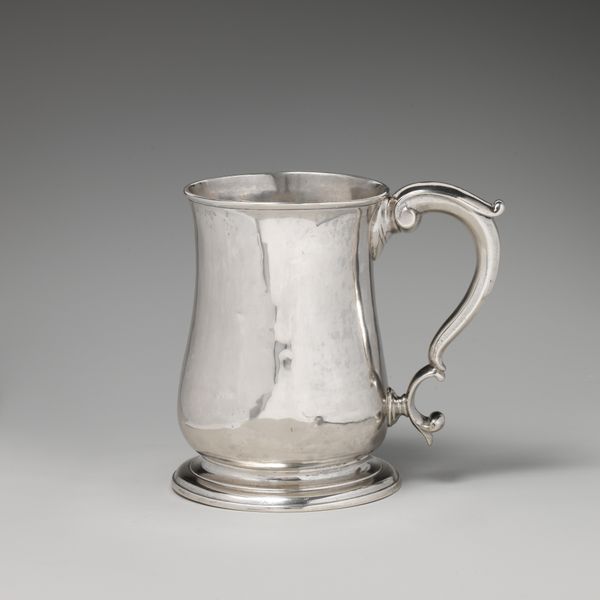
ceramic, sculpture
#
ceramic
#
stoneware
#
sculpture
#
ceramic
#
decorative-art
Dimensions: Overall: 9 5/8 × 9 in. (24.4 × 22.9 cm)
Copyright: Public Domain
Editor: We're looking at a "Flagon" from 1788, a stoneware sculpture currently residing at the Metropolitan Museum of Art. I’m struck by its austere appearance; it seems like a utilitarian object elevated by subtle craftsmanship. How would you interpret this work, especially given its historical context? Curator: This flagon, seemingly simple, actually speaks volumes about 18th-century society. Stoneware wasn’t just a material, it was a statement. By the 1700s it was transitioning from simple pottery to a more decorative or refined vessel, although the emphasis was less decorative flourish and more refined simplicity and functional durability. What strikes you about the inscription on the vessel? Editor: It says "Presbyterian Dissenters." That hints at a specific community. Was stoneware somehow associated with this group? Curator: Exactly! Dissenters, often facing persecution, favored unostentatious objects. Stoneware's durability and plainness aligned with their values, perhaps as a quiet form of resistance against the lavish displays of the establishment. This flagon might have been used during religious ceremonies or communal gatherings, signifying solidarity. Think about how everyday objects can become powerful symbols of identity and belonging. Editor: That's fascinating! So, the flagon is not just a container but also a testament to the socio-political climate of the time. The choice of stoneware then becomes a conscious one. Curator: Precisely. Consider the implications of its survival. What stories could it tell if it could speak? What kind of dialogues was it privy to as it served its intended purpose? It connects us to those who used it, their struggles, and their community. Editor: I’ve always appreciated decorative arts for its beauty, but I never realized objects like this could speak to larger social narratives. Thank you, this insight gave me so much to reflect on! Curator: Absolutely, viewing art as cultural commentary is how we can have a deeper and richer understanding of people and its function in history.
Comments
No comments
Be the first to comment and join the conversation on the ultimate creative platform.
